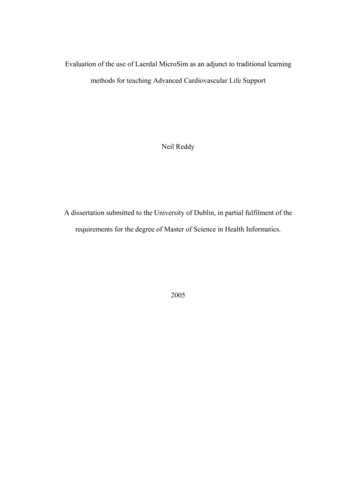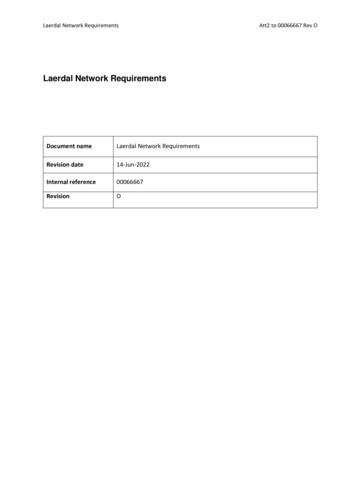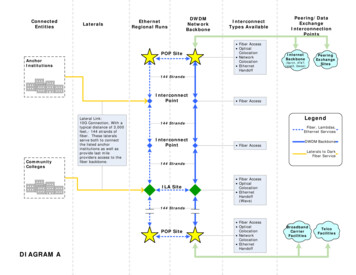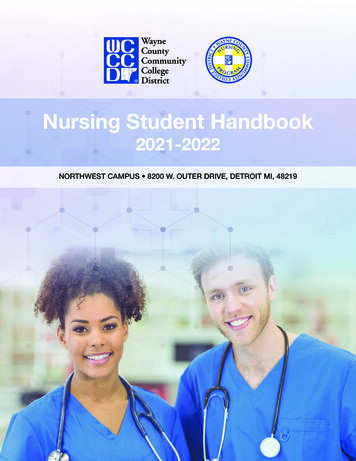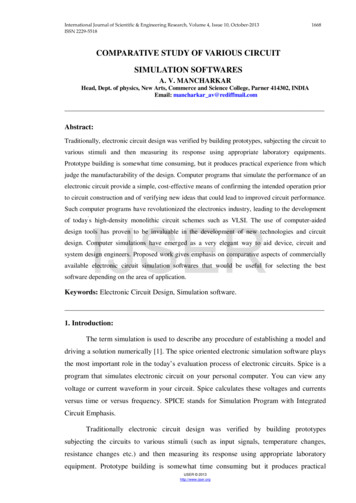
Transcription
Improving HealthcareThrough Simulation
IntroductionOur goal in putting together this e-book is foryou to read each page feeling more and moreempowered. Whether you are a current client,prospective client, or someone who just wants tolearn more about patient simulation, our objectiveis to help you multiply your knowledge so thatyou can achieve your professional goals. We havepurposefully selected themes that we hope will helpyou achieve success—whatever your role might bein simulation.Change is a constant in healthcare. With change,of course, comes disruption, new learning curves,and even potential patient risk. In the context ofour mission of helping save lives, we believe thatsimulation is an optimal means for mitigating theimpact of change. Through simulation, healthcarepractitioners can train in realistic circumstancesbefore ever taking into their care a human life.As healthcare continues to change, we continueto develop solutions to prepare learners for realworld situations.In each of the following chapters, you’ll findinformation surrounding the latest trends inhealthcare. There will be hyperlinks that you canfollow to read additional content varying fromarticles to infographics to videos. If you like whatyou read, we hope you’ll share it!Thank you for reading and being part of a communitythat is working hard to improve healthcare for all. 2019 Laerdal Medical. All rights reserved. 19-171882
Table of ContentsChanges in Nursing Practice.4Reducing Risk During Childbirth.7Improving Newborn Resuscitation. 10Better Training for Pediatric Emergencies. 14Diagnostic Imaging.18Assessing Your Simulation Program. 21Virtual Simulation.24Doing More with Less. 27Professional/Staff Development. 30Peer-to-Peer Learning. 33Patient Safety.36 2019 Laerdal Medical. All rights reserved. 19-171883
ChangesinNursingPractice 2019 Laerdal Medical. All rights reserved. 19-171884
“Nurses are no longer caretakers to thehealthcare team, carrying out tasks ordered byphysicians. Now we are leaders of the teamas well as patient advocates and educators.In the ED where I work, nurses are thefirst to assess patients and often establishthe goals for their hospital stay. Physiciansview us as colleagues who make concreteobservations and offer valuable suggestions.1— Rosanne Greenan, RN, CEN, Northern Westchester Hospital 2019 Laerdal Medical. All rights reserved. 19-17188
The expectations for nurses are highertoday than 25 years ago.Nurses today are expected to have strong leadership,critical thinking, and decision making skills. This is far fromwhat was common for nurses 25 years ago.In addition, today’s nurses are responsible for the diagnosis andassessment of a patient and safe patient-centered care. They arealso more likely to be hired if they have earned an advanceddegree. These are just a few of the ways that nursing has changed,and why the way they train has had to change too.To meet these increasing expectations, nurse educators are turning tosimulation. The National Council of State Boards of Nursing (NCSBN) statesthat up to 50% of clinical time can be replaced with simulation.2 It providesthe hands-on, inclusive, and immersive experience that learners benefit from.Simulation can help nurses to meet the needsof today’s nursing environment. 2019 Laerdal Medical. All rights reserved. 19-171886
Reducing RiskduringChildbirth 2019 Laerdal Medical. All rights reserved. 19-171887
76%of obstetrics/gynocology3professionals have been sued at least once. 2019 Laerdal Medical. All rights reserved. 19-17188
Maternal mortality and morbidity remain a4challenge in the United States.Approximately 700 women die each year in the U.S. due to pregnancyand delivery complications.5 Today, over 60% of these deaths arepreventable.6Risk has always been a major impetus for the use of simulation.Caring for two patients, the mother and the baby, creates double thepossibility for complications and requires twice the amount of patientmonitoring. And, now more is known about how women’s generalhealth and lifestyle can further affect the risk of complications.Simulation can help prepare healthcare professionals for low-frequency,high-acuity emergencies. The multitude of simulation fidelity options,which create varying degrees of realism, give educators tools tosupport experiential learning at all levels.Each different simulation modality can support the needs of learnersand help to reduce risk in maternal and newborn care. 2019 Laerdal Medical. All rights reserved. 19-171889
ImprovingNewbornResuscitation 2019 Laerdal Medical. All rights reserved. 19-17188 10
0 10,000,000 10 10,000,000 110 million babies worldwide0 10,000,000 10 10,000,000 1will need help breathing when they are born. 2019 Laerdal Medical. All rights reserved. 19-17188
0 10,000 10 10,000 10 10,000 10 10,000 110 thousand non-breathing babieswill need advanced methods of resuscitation.7 2019 Laerdal Medical. All rights reserved. 19-17188
The “Golden Minute” highlights anessential training opportunity.A newborn’s very first minutes outside of the womb arecritical in predicting newborn outcomes. Only 60% ofasphyxiated newborns can be predicted before birth, and theremaining 40% are identified during the “Golden Minute.”8To make the most of these critical 60 seconds, it is importantto have evidence-based care guidelines and to train for effectiveneonatal resuscitation. In 1987, the American Academy ofPediatrics (AAP) created the Neonatal Resuscitation Program (NRP ) for just this reason. Now, an estimated 200,000learners complete the NRP Provider Course every year.9 2019 Laerdal Medical. All rights reserved. 19-17188 13
Better TrainingPediatricEmergenciesfor 2019 Laerdal Medical. All rights reserved. 19-17188 14
Root Causes10of Pediatric Errors:Impaired calculation ability under stressInaccurate weight estimateFaulty recall of dosesUnaided calculations 2019 Laerdal Medical. All rights reserved. 19-17188
Children are not just small adults.Over the past twenty-five years,emergency departments have seen anincrease in patients, and nearly 25% ofthese are children.11 Because childrenare brought primarily to facilities that donot specialize in pediatric care, expertsworry that children may not be receivingthe specialized care they deserve.12Simulations can be made moreimpactful with a focus on:More and more, educators are turningto simulation, which can preparehealthcare professionals to appropriatelytreat and care for pediatric patients.Incorporating each of these elementscan provide learners with theopportunity to exercise the caution,decisiveness, and collaboration requiredto treat high-risk pediatric patients. the decision-making process in aclinical pathway administering small doses ofmedication working with an interdisciplinary team 2019 Laerdal Medical. All rights reserved. 19-17188 16
Administering medication to smallpatients is a big concern.The single most commonly cited error in pediatrics is incorrectmedication dosing.13 Research suggests that medication errorsamong pediatric patients can be as high as 1 in every 6 orders.14Children can vary greatly in size, weight, and organ systemmaturity. Each of these factors can affect their ability to metabolizeand excrete medications. Practicing calculations and preparingmedications as part of a simulation can improve a learner’sproficiency in administering medications.By integrating medication management into a scenario, learners cansee what an adverse medication reaction might look like and howto prevent one. 2019 Laerdal Medical. All rights reserved. 19-17188 17
DiagnosticImaging 2019 Laerdal Medical. All rights reserved. 19-17188 18
17%of patient harmstems from improper15diagnosis alone. 2019 Laerdal Medical. All rights reserved. 19-17188
Point-of-Care ultrasound is a valuableaddition to an acute care clinician’s toolbox.Ultrasound has historical applicationsin military and industrial settings,but today it is also well-establishedin healthcare. The technology isintegrated among a wide-range ofdiagnostic and therapeutic uses.As ultrasound equipment becomesmore portable, bedside point-ofcare ultrasound (POCUS) can beused to improve diagnostic accuracyand influence treatment plans inemergency and intensive care areas.Simulation training is particularly wellsuited to help learners master POCUSuse. Ultrasound task trainers can be easilyincorporated into scenarios involvingphysical examinations, resuscitation andstabilization, and emergency diagnosis.Learners can achieve competence inimage acquisition and interpretationand develop practices which willultimately improve patient safety. 2019 Laerdal Medical. All rights reserved. 19-17188 20
AssessingSimulationProgramyour 2019 Laerdal Medical. All rights reserved. 19-17188 21
“We anticipated that there would be faculty whowere unfamiliar with simulation education, whichwas revealed in the assessment, but we alsolearned that almost all of our faculty were eagerto learn and become proficient in simulation.— Southern Illinois University Edwardsville (SIUE)16 2019 Laerdal Medical. All rights reserved. 19-17188
Enhance the student learning experience withexpert assessments and recommendations.For any organization, simulation can be quite a large undertaking.Faculty who already have limited time can become overwhelmedby the added responsibility. Today, though, experts are available tohelp provide guidance.Programs have been developed to help make the process ofimplementing change more smooth. The Needs Assessment andStrategic Planning Workshop, as an example, provides an initialassessment, the implementation steps, and regularly scheduledpulse checks to customers. Each of these components isgeared toward those who want help expanding the use of theirsimulations.Identifying areas for improvement is the first step to growing asimulation program. 2019 Laerdal Medical. All rights reserved. 19-17188 23
VirtualSimulation 2019 Laerdal Medical. All rights reserved. 19-17188 24
65%of nursing programs17are using virtual simulation. 2019 Laerdal Medical. All rights reserved. 19-17188
To meet the needs of modern day learners,you need to deliver on their terms.Today, information is at a learner’s fingertips with Google andother search engines. 77% of adults in the United States own asmartphone, which is a substantial increase from 35% of adults in2011.18Learners of all ages are exposed to more information in a daythan previous generations were, and they are more prone tomultitasking.19 Because digital media has made such a tremendousimpact in the daily lives of learners, nursing programs have begun toimplement virtual simulation in their training curricula.Virtual simulation, one of the more prominent forms of eLearning,helps learners to conceptualize safe care practices and developcritical-thinking skills. 2019 Laerdal Medical. All rights reserved. 19-17188 26
DoingMorewithLess 2019 Laerdal Medical. All rights reserved. 19-17188 27
700women die each yearin the U.S. before orduring childbirth.20 2019 Laerdal Medical. All rights reserved. 19-17188
Simulation experience in low-resourcecountries can be just as effective in the U.S.Laerdal Global Health (LGH), a not-for-profit organizationfunded by Laerdal Medical, develops programs to reducematernal and infant mortality rates in low-resource countries.Thus far, they have seen success with their programs. Forexample, a study in Tanzania showed a 47% decrease innewborn mortality after using LGH’s products to train.21In the United States, women are more likely to die fromchildbirth or pregnancy-related causes than other women inthe developed world.22 While LGH’s efforts are focused onlow-resource countries, their experience shows that simulationtraining is effective in any setting—at any level of fidelity. 2019 Laerdal Medical. All rights reserved. 19-17188 29
Professional Staff/Development 2019 Laerdal Medical. All rights reserved. 19-17188 30
“Faculty development must be viewed as adiffusion process. If the fundamentals for successare put into place and practiced consistently,then the faculty development program will besuccessful both in terms of institutional impactand faculty career satisfaction.— Henry W. Smorynski, PhD23 2019 Laerdal Medical. All rights reserved. 19-17188
Organizations must recognize the value ofinvesting in faculty and staff development.Programs continue to invest in simulation equipment and labspace, but research shows that the investments toward facultydevelopment are often underfunded or neglected entirely. 24Because of this, many current simulation faculty members havereceived very little formal training and may feel overwhelmed intheir role.25Experts recommend continual competency development foreducators, coordinators, and administrators involved in simulations.Periodic trainings can help to build confidence among facultyand staff. And, professional development can also help to addressturnover, standardize training, and improve agility.In order to determine the training frequency and subject matterfor a specific facility, it’s also recommended to perform arisk assessment. 2019 Laerdal Medical. All rights reserved. 19-17188 32
Peer-to-PeerLearning 2019 Laerdal Medical. All rights reserved. 19-17188 33
Peer learning may be anequally, if not more, effectivemethod of deliveringinformation in undergraduate26nursing education. 2019 Laerdal Medical. All rights reserved. 19-17188
Enhance learning opportunities throughformalized peer-led activities.Peer teaching is a method by which one student instructsanother. Over the past 30-40 years, this method oflearning has become increasingly popular. In simulationlabs, peer-to-peer learning can provide more flexibility forfaculty and more hands-on skill development for students.Studies show that undergraduate nursing students canbenefit from peer learning. These benefits include:27 Increased confidence Improved competence Decreased anxiety Heightened satisfaction 2019 Laerdal Medical. All rights reserved. 19-17188 35
PatientSafety 2019 Laerdal Medical. All rights reserved. 19-17188 36
3Medical error is nowestimatedto be therdleading cause of28death in the U.S. 2019 Laerdal Medical. All rights reserved. 19-17188
Poor teamwork and communications arethe root cause for most patient harm.If you look at healthcare organizations who are leadersin delivering safe, patient-centered care, a commoncharacteristic is that they place a premium on creatinggreat teams. Often this is in response to the findingthat most cases of patient harm are attributable to abreakdown in teamwork and communications.28Preventable medical error in U.S. hospitals accountsfor an estimated 250,000 patient deaths and overone million injuries annually.29 And, many are nowturning to team-based simulation as a means toachieve their best possible performance —with thegoal of reducing potential patient harm. 2019 Laerdal Medical. All rights reserved. 19-17188 38
Simulation is effective at creating betterteams and reducing patient risk.Using simulation as an intervention toimprove team training is a growing trend inhealthcare. Medical schools, nursing schools,and hospitals have all started to agree thatmultidisciplinary team training needs to bepart of the curriculum. The objective: tocreate experiences where clinicians whowork with each other irregularly, and whohave different clinical backgrounds, canhave the chance to practice teamworkand communication skills before they everencounter a real patient.Multidisciplinary team simulations turn ateam of experts into an expert team. Ifyou have not considered using thisapproach, evidence indicates that ityields major benefits. 2019 Laerdal Medical. All rights reserved. 19-17188 39
Want more content like this?Sign up for Laerdal Medical email updates.You can identify your interests and receivenew educational content, updates, eventinformation and more.www.laerdal.com 2019 Laerdal Medical. All rights reserved. 19-17188 40
References1. Nurse.com (2013). Q & A: Now and then in nursing.Retrieved from: en-in-nursing/2. National Council of State Boards of Nursing. (2017). Simulationstudy. Retrieved from: https://www.ncsbn.org/685.htm3. Adinma, J. (2016). Litigations and the obstetrician in clinicalpractice. Annals of Medical and Health Sciences Research, 6(2);74-79. doi: 10.4103/2141-9248.1818474. Centers for Disease Control & Prevention. (2018).Pregnancy-related deaths. Retrieved from: anthealth/pregnancyrelatedmortality.htm5. Agrawal, P. (2015). Maternal mortality and morbidity in theUnited States of America. World Health Organization.Retrieved from: 7/en/6. McGowan, K. (2018). New report explores why preventablematernal deaths continue to occur in the United States.Maternal Health Task Force. Retrieved from: -the-united-states/7. Heerden, V. (2012). An introduction to helping babies breathe:The golden minute is here for south African newbornbabies. Professional Nursing Today, 16(3).8. Bissinger, R.L. (2015). Neonatal resuscitation. Medscape.Retrieved from: view9. American Academy of Pediatrics. (2018). History. Retrievedfrom: ion/life-support/NRP/Pages/History.aspx10. Sullivan, B. (2016). Reality training: Administering pediatricmedication. Retrieved from: c-medication/11. Wier, L.M., Yu, H., Owens, P., & Washington, R. (2013).Overview of children in the emergency department, 2010.Agency for Healthcare Research and Quality. Retrieved fs/sb157.pdf12. Ibid13. American Academy of Pediatrics. (2003). Prevention ofmedication errors in the pediatric inpatient setting. AmericanAcademy of Pediatrics, 112(2).14. Ibid15. Institute of Medicine (US) Committee on Quality of HealthCare in America; Kohn LT, Corrigan JM, Donaldson MS,editors. To Err is Human: Building a Safer Health System.Washington (DC): National Academies Press (US); 2000.2, Errors in Health Care: A Leading Cause of Death andInjury. Available from: https://www.ncbi.nlm.nih.gov/books/NBK225187/16. Laerdal Medical. (2018). We ignited the simulation fuse.Retrieved from: he-simulation-fuse/17. Wolters Kluwers. (n.d.). How nursing education programs arecurrently using educational technology. Retrieved from: /images/Nursing-Education-Technology.gif18. Rainie, L. & Perrin, A. (2017). 10 facts about smartphonesas the iphone turns 10. Pew Research Center. Retrievedfrom: facts-about-smartphones/19. American Press Institute. (2015). How millennials get news:Inside the habit of America’s first digital generation. Retrievedfrom: s/reports/survey-research/millennials-news/20. Agrawal, P. (2015). Maternal mortality and morbidityin the United States of America. World HealthOrganization. Retrieved from: 7/en/21. Arlington, L., Kairuki, A. K., Isangula, K.G., Meda, R.A., Thomas,E., Temu, A., et al. (2017). Implementation of helping babiesbreathe: A 3-year experience in tanzania. Journal of theAmerican Academy of Pediatrics, 139(5). 5/e2016213222. Centers for Disease Control and Prevention. (2018).Pregnancy-related deaths. Retrieved from: anthealth/pregnancyrelatedmortality.htm23. Smorynski, H.W. (2017). Making faculty development aninstitutional value and a professional practice. AcademicBriefing. Retrieved from: aculty-development-institutional-value/24. Jeffries, P.R., Dreifuerst, K.T., Kardong-Edgren, S., & Hayden,J. (2015). Faculty development when initiating simulationprograms: Lessons learned from the national simulationstudy. Journal of Nursing Regulation, 5(4). Retrievedfrom: https://ncsbn.org/simulation 2015 jeffries.pdf25. Ibid26. Stone, R., Cooper, S., Cant, R. (2013). The value of peerlearning in undergraduate nursing education: A systematicreview. International Scholarly Research Notices: Nursing, 2013.DOI: 10.1155/2013/93090127. Ibid28. The BMJ. ( 2016). Medical error—the third leading causeof death in the US. The BMJ, 353(i2139). DOI: 10.1136/bmj.i213929. Ibid30. Leonard, M., Graham, S., & Bonacum, D. (2004.) The HumanFactor: The Critical Importance of Effective Teamworkand Communication in Providing Safe Care. Quality &Safety in Health Care, 13 (Suppl 1), i85-i90. doi:10.1136/qshc.2004.010033 2019 Laerdal Medical. All rights reserved. 19-17188
funded by Laerdal Medical, develops programs to reduce maternal and infant mortality rates in low-resource countries. Thus far, they have seen success with their programs. For example, a study in Tanzania showed a 47% decrease in newborn mortality after using LGH's products to train.21 In the United States, women are more likely to die from

